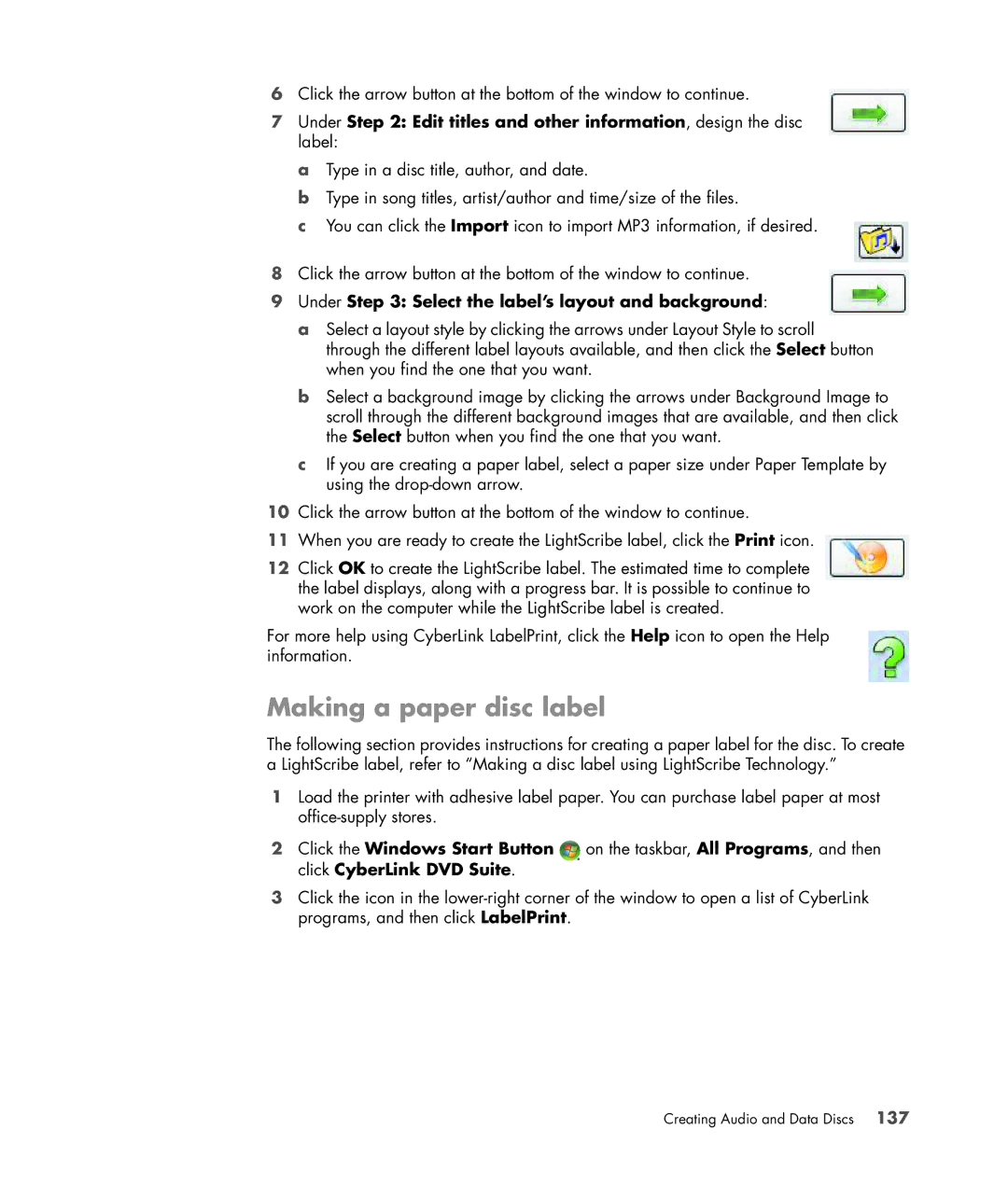
6Click the arrow button at the bottom of the window to continue.
7Under Step 2: Edit titles and other information, design the disc label:
aType in a disc title, author, and date.
bType in song titles, artist/author and time/size of the files.
c You can click the Import icon to import MP3 information, if desired.
8Click the arrow button at the bottom of the window to continue.
9Under Step 3: Select the label’s layout and background:
a Select a layout style by clicking the arrows under Layout Style to scroll through the different label layouts available, and then click the Select button when you find the one that you want.
b Select a background image by clicking the arrows under Background Image to scroll through the different background images that are available, and then click the Select button when you find the one that you want.
cIf you are creating a paper label, select a paper size under Paper Template by using the
10Click the arrow button at the bottom of the window to continue.
11When you are ready to create the LightScribe label, click the Print icon.
12Click OK to create the LightScribe label. The estimated time to complete the label displays, along with a progress bar. It is possible to continue to work on the computer while the LightScribe label is created.
For more help using CyberLink LabelPrint, click the Help icon to open the Help information.
Making a paper disc label
The following section provides instructions for creating a paper label for the disc. To create a LightScribe label, refer to “Making a disc label using LightScribe Technology.”
1Load the printer with adhesive label paper. You can purchase label paper at most
2Click the Windows Start Button ![]() on the taskbar, All Programs, and then click CyberLink DVD Suite.
on the taskbar, All Programs, and then click CyberLink DVD Suite.
3Click the icon in the
Creating Audio and Data Discs 137
